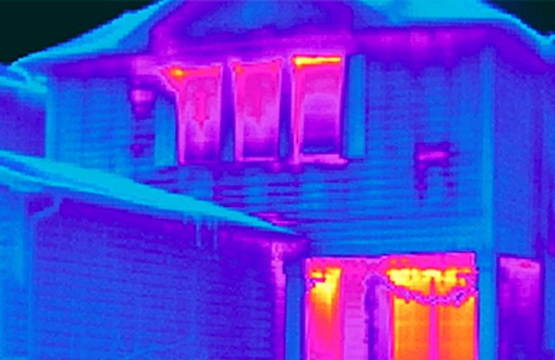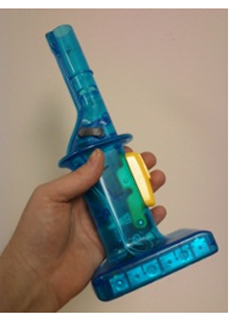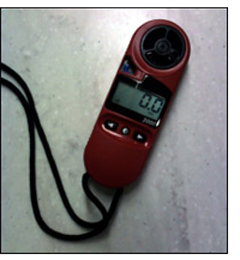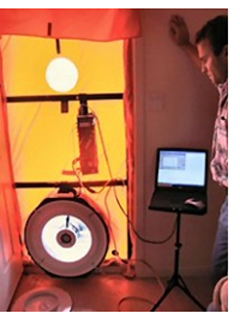
Home performance contractors and energy auditors who have been carrying around a thermal imager the longest know what additions to their camera case make the difference in being prepared. We have heard of a number of suggestions and would like to share with you five possible items to add to your case that might help during your next infrared building inspection.
Moisture Meter
Thermal imaging cannot detect mold or moisture, but it does locate thermal anomalies that may be associated with the presence of moisture in a building. And where there is moisture, the possibility for mold to grow exists. The thermal signature of a moisture problem can be warm or cool and is caused by some combination of evaporation, capacitance, and conduction. Infrared helps you narrow your search area for moisture by locating these warm or cool thermal anomalies on a building surface. Once an anomaly that is suspected to be moisture is detected, a moisture meter is then used to confirm the findings.

The Wizard Stick
Chemical smoke pencils are fine too if safely utilized, but The Wizard Stick (Image, left) is fun to use, kids, love it and it’s non-toxic. What’s not to like? Cold smoke or a hand-held fog generator such as The Wizard Stick can help you visualize air leakage bypasses and pathways that might not necessarily show up thermally with an infrared camera. Additionally, since air is transparent to IR and cannot be seen by the camera, it is also a great way to visually demonstrate to the homeowner interior air movements around doors and windows.
Thin Film Plastic Bag
In buildings, we can often find ourselves in dirty, dusty, or even wet environments (think crawl spaces, basements, or attics). A thin film plastic bag, such as a lightweight kitchen garbage bag or grocery bag can help protect your camera and lens from dust, debris, and moisture. Thin film plastic bags are highly transmissive to infrared radiation allowing you to inspect right through them. Know that regardless of how thin a bag might seem, none are 100% transmissive, and using one also impacts temperature measurements. Having said that, measuring temperature is less of a concern in building applications as we are more interested in the qualitative patterns of missing insulation and air leakage patterns which can still be easily seen through a thin-film plastic bag.

Pocket Weather Station
Environmental conditions most certainly affect what we see thermally in a building, so documenting these is an important part of a comprehensive report. Rather than speculate, use a pocket weather station to measure such data points such as wind speed, air temperature, and relative humidity. The Testo 410 and Kestrel 3000 (Image, left) are two lower-cost options that are widely available.
Extra Memory Card
The “flash memory” cards (SD, microSD, etc.) shipped with many infrared cameras today offer at least 2GB of storage. While this certainly seems like plenty of space, many imagers also now record voice annotation along with the thermal, visual, and even IR video files which, all together, can fill up a memory card quite quickly. These types of storage devices have also been known to occasionally fail. Having an extra card in your camera case allows you to continue your inspection without interruption.

Most Honorable Mention - Blower Door
While it may not fit in your camera case we could not, in good conscience, put up a Top 5 list of “must-have” inspection accessories for building thermographers and not list a blower door. The only reason why it was not mentioned earlier is that we were trying to list five solid items that are possibly not as obvious as having a blower door.
If you are planning to properly evaluate the thermal envelope of a building, then using a blower door (or depressurizing in some appropriate manner) is a must if safe to do so and you are qualified. The infrared camera by itself is not going to show you certain air leakage pathways or patterns as well as what happens to the performance of insulation as air washes through it. Likewise, while a blower door might tell you how much air leakage you have or what the total size of the “hole” may be in the envelope, it is not going to show you where those bypasses are located or the actual pathways of the air movement.
Again, these are just some items that we have found work well for many building thermographers in a number of situations. There are certainly other items that can be added to your camera case, but your own experience is going to be your best guide as to what works for you.